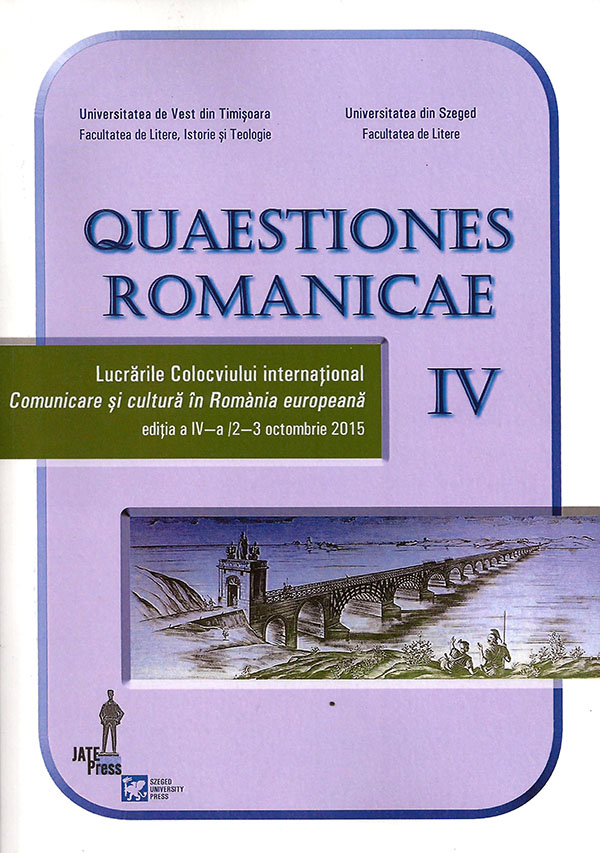Elemente de cromatică vergiliană în traducerea lui G.I. Tohăneanu
Abstract: (Elements of Vergilian Chromatics in G.I. Tohaneanu’s Translation) Being a prominent personality of Romanian philology, the author of an impressive work comprising a plethora of books, studies and articles on stylistics and lexicology, G.I. Tohăneanu was also a well-known classicist, who attempted and succeeded to convey into Romanian the language of our Latin forefathers. The conversion in Romanian of Macrobius’s Saturnalia and the inspired translations of the Vergilian creations Aeneid (1996) and Bucolica. Georgica (1997) are a testimony to this. By looking at the two latter translations, this study intends to explore how certain chromatic terms, created by the Mantuan poet, acquire – in the interpretation of the savant and refined Latinist, of exceptional talent and literary gift –, a new appearance, not less expressive than the Latin original. This is the case of the words pallor,-ōris; pallens,-ntis and pallĭdus(3), translated by the eminent scholar from Timisoara using comparisons (ca ceara – as wax) or epithets (galfăd – yellow, livid – livid, pal – pale, palid – pallid, sarbed – sallow, sărbezit – discolored, însărbezit – cadaverous, spelb – waxen), able to express in a plastic manner, suggestively, the lack of color intensity and brightness, which defines, quintessentially, the concept of ‘pallor’ in the Vergilian artistic space.
Keywords: translation, chromatic, as wax, pale, pallid, sallow, discolored etc.
Rezumat: Personalitate marcantă a filologiei româneşti, autor al unei opere impresionante, alcătuite din numeroase volume, studii şi articole de stilistică şi lexicologie, G.I. Tohăneanu a fost şi un clasicist ilustru, care a încercat şi a reuşit să transpună în tipare româneşti limba străbunilor noştri latini. Mărturie stă, în acest sens, tălmăcirea Saturnaliilor lui Macrobius (1961), la care se adaugă inspiratele traduceri din creaţia vergiliană: Eneida (1994) şi Bucolice. Georgice (1997). Asupra ultimelor două traduceri se opreşte lucrarea de faţă, care îşi propune să urmărească felul cum unii termeni cromatici, plămădiţi de artistul mantuan, dobândesc – în tâlcuirea savantului şi rafinatului latinist, înzestrat din plin cu talent şi har poetic –, o faţă nouă, nu mai puţin expresivă decât cea din originalul latin. Acesta este cazul cuvintelor pallor,-ōris; pallens,-ntis şi pallĭdus(3), care sunt traduse de eminentul magistru timişorean cu ajutorul unor comparaţii (ca ceara) sau epitete (galfăd, livid, pal, palid, sarbed / sarbăd, sărbezit, însărbezit, spelb), capabile să redea plastic, sugestiv, lipsa de intensitate cromatică şi strălucire, ce defineşte, esenţialmente, conceptul de ‘paloare’ în spaţiul artistic vergilian.
Cuvinte-cheie: traducere, cromatic, ca ceara, pal, palid, sarbed, sărbezit etc.
